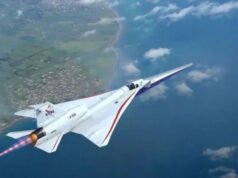NISAR Satellite Mission 2025: India–US Radar Collaboration to Revolutionize Earth Observation
Introduction: A Landmark in Space Cooperation
On July 30, 2025, at 5:40 PM IST, the world will witness a historic event in space exploration—the launch of NISAR (NASA-ISRO Synthetic Aperture Radar), a first-of-its-kind dual-frequency radar Earth observation satellite jointly developed by NASA and ISRO. Set to be launched aboard GSLV-F16 from India’s Satish Dhawan Space Centre, NISAR is the product of deep collaboration, scientific ambition, and technological excellence.
Equipped with L-band and S-band synthetic aperture radar (SAR) systems, NISAR is designed to monitor earthquakes, glacier melt, agricultural changes, forest biomass, and land deformation across the globe. Its capability to see through clouds, smoke, and vegetation, both day and night, sets a new benchmark in Earth monitoring.
As the launch date nears, this mission signals not just technological advancement but also geopolitical trust, climate urgency, and scientific innovation between India and the United States.
1. What is NISAR?
1.1 Full Form and Mission Purpose
- NISAR stands for NASA-ISRO Synthetic Aperture Radar.
- It is the world’s first radar imaging satellite to use dual frequencies (L-band and S-band).
- Its mission: To map and monitor changes on Earth’s surface with unprecedented accuracy, every 12 days.
1.2 Key Mission Objectives
- Track Earth’s surface deformation caused by earthquakes, landslides, volcanoes, and more.
- Monitor agricultural activity including crop growth, water usage, and soil health.
- Measure forest biomass and carbon storage for climate change studies.
- Monitor glacier and polar ice sheet dynamics to understand sea-level rise.
- Track flooding and coastal changes in disaster-prone areas.
2. Launch Details: Date, Time, and Vehicle
| Launch Details | Information |
|---|---|
| Launch Date | July 30, 2025 |
| Launch Time | 5:40 PM IST |
| Launch Vehicle | GSLV-F16 |
| Launch Site | Satish Dhawan Space Centre, Sriharikota |
| Mission Duration | Minimum 3 years (with possibility of extension) |
The satellite will be placed in a sun-synchronous near-polar orbit at 747 km altitude to cover the entire globe every 12 days.
3. The Technology Behind NISAR
3.1 Dual-Frequency Synthetic Aperture Radar (SAR)
NISAR will carry two radar systems:
- L-band SAR (provided by NASA): Deeper ground penetration, suitable for vegetation and ice.
- S-band SAR (provided by ISRO): Higher resolution, ideal for land and infrastructure.
This combination allows complementary observations, offering both depth and precision.
3.2 Advanced Radar Features
- 360 km swath width for large area coverage.
- High temporal resolution with revisit times every 6–12 days.
- All-weather, day-night capability.
- Advanced onboard data compression and storage.
- Real-time transmission to both NASA and ISRO ground stations.
4. NASA and ISRO: A True Technological Partnership
4.1 Division of Responsibilities
- NASA provides:
- L-band SAR radar system.
- High-rate telecommunication subsystem.
- GPS receivers and a solid-state recorder.
- Mission planning and science algorithms.
- ISRO provides:
- Satellite bus (I-3K platform).
- S-band SAR radar.
- Launch services (GSLV-F16).
- Ground support and data reception.
4.2 Budget and Investment
- The total cost is estimated to be over $1.5 billion.
- This makes NISAR one of the most expensive Earth observation satellites ever developed.
- NASA and ISRO have shared development costs and responsibilities in proportion to their contributions.
5. Scientific and Societal Benefits
5.1 Climate Change and Environmental Monitoring
- Measure forest biomass and deforestation to assess carbon sinks.
- Study permafrost melting and glacier retreat in the Arctic and Himalayas.
- Analyze coastal erosion and mangrove degradation.
5.2 Agriculture and Food Security
- Track crop health, irrigation, and drought stress.
- Provide decision support for farmers and governments.
- Help in yield forecasting and food supply chain planning.
5.3 Disaster Preparedness and Management
- Real-time mapping of earthquakes, landslides, and floods.
- Provide early warning systems for high-risk zones.
- Reduce human and economic loss by enabling faster emergency response.
6. Global Monitoring and Geopolitical Significance
6.1 A Truly Global Mission
NISAR will monitor changes in:
- India’s Himalayan glaciers
- The Amazon rainforest
- African agriculture
- California’s seismic zones
- Indonesia’s coastlines
- Greenland’s ice sheets
With its global scope and scientific neutrality, NISAR data will benefit all nations, not just India and the U.S.
6.2 Strengthening India–US Space Diplomacy
- Deepens the strategic tech partnership between two of the world’s largest democracies.
- Enhances space cooperation beyond national boundaries.
- Sets the precedent for future joint missions in planetary exploration, lunar research, and Mars missions.
7. NISAR vs Other Earth Observation Satellites
| Feature | NISAR | Sentinel-1 | Landsat-9 |
|---|---|---|---|
| Radar Type | Dual-frequency SAR (L/S) | Single-frequency SAR (C) | Optical |
| Revisit Time | 12 days | 12 days | 16 days |
| Cloud Penetration | Yes | Yes | No |
| All-Weather Capability | Yes | Yes | No |
| Global Coverage | Yes | Yes | Partial |
| Partners | NASA + ISRO | ESA | NASA + USGS |
NISAR stands out for its dual-band radar, enabling it to measure subtle changes in Earth’s surface that optical and single-frequency systems cannot detect.
8. Open Data Policy and Research Benefits
- NISAR data will be publicly available to researchers, governments, students, and private companies.
- This aligns with NASA and ISRO’s open data principles, encouraging global research and innovation.
- Applications will include:
- Urban planning
- Wildlife migration studies
- Infrastructure monitoring
- Climate justice and advocacy
9. Future of Earth Observation: Post-NISAR Era
9.1 NISAR as a Model
NISAR sets the template for:
- Autonomous observation platforms
- Artificial intelligence-based image processing
- Multi-agency climate collaborations
- Joint space missions involving multiple countries
9.2 Next in Line
Following NISAR, NASA and ISRO are considering:
- Lunar and Mars radar missions
- Ocean monitoring satellites
- AI-driven real-time response satellites
Conclusion: Earth Observation Redefined
As the NISAR satellite prepares for launch on July 30, 2025, it represents far more than a marvel of space engineering—it embodies a shared human commitment to understanding and protecting our planet. With its cutting-edge dual-frequency radar, NISAR will allow scientists, governments, and even ordinary citizens to observe Earth’s dynamics in real time, make informed decisions, and respond quickly to environmental changes.
From glacier melts to groundwater usage, from forest loss to tectonic shifts—NISAR will be our eyes in the sky, watching over a planet that’s increasingly in flux.
🔖 Key Takeaways
- NISAR launches July 30, 2025 at 5:40 PM IST via GSLV-F16.
- It is a NASA-ISRO collaboration with dual-band radar (L/S).
- Tracks deformation, agriculture, climate change, and disasters.
- Has all-weather, cloud-penetrating, day-night capability.
- Data will be public and globally accessible.
NISAR satellite launch 2025, NASA ISRO dual radar satellite, Earth observation using SAR, NISAR Earth monitoring mission, GSLV F16 satellite launch, synthetic aperture radar Earth data, climate change satellite NISAR, India US space research 2025














